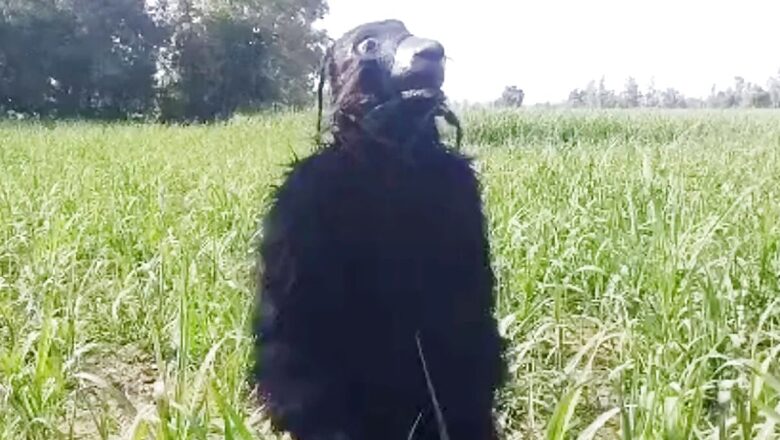Move Over Scarecrows, Farmers in UP Are Donning Bear Costumes to Save Their Crops from Stray Animals

views
Ram Niwas, a farmer in his late 30s from Lakhimpur Kheri district in Uttar Pradesh, dons a bear costume to guard his crops. He finds this to be the most effective way to scare away stray cattle and monkeys from his field, a burning issue in the state due to which farmers are resorting to the most peculiar solutions. The stray animal menace has left a severe dent on their income.
“In Lakhimpur Kheri, most of the farmers are engaged in cane, groundnut, green vegetable farming that largely attracts stray cattle and other animals; it is a big nuisance around here. There are several instances of stray animals spoiling large tracts of crops, which left a severe dent on our income,” said Ram Niwas, who is from Dhakora village.
Got the idea from street play
It was then that Ram Niwas decided to opt for a unique way to scare away the animals. “I tried scarecrows, fencing, air guns but nothing worked. So, a few weeks ago I saw a street play at a neighbouring town where I spotted a person in a bear costume and decided to try this method at least once,” he said.
Ram Niwas bought the costume of a bear for Rs 700 and tried it out. “I put it on and went to the field and, to my surprise, it worked and I managed to scare away the stray animals by making some movements and growling sounds,” he said.
It’s been more than two weeks since Ram Niwas used this method and, noting his success, some others in the village approached him and offered him Rs 150 to Rs 250 per day to hire him to guard their fields.
“Some farmers offered me a decent amount to guard their fields. I accepted the offer and now I am guarding their fields along with mine during the daytime,” he added.
Other than Dhakora village in Lakhimpur Kheri, farmers from neighbouring districts have also caught on to the idea and are opting for a similar way to guard their fields and to keep their crops safe. Hairamkhera, Rahajaniya, Fariya, Pipariya, Chapartala and Baikuaaa are some other villages, where a large number of farmers have adopted this practice.
When Kismat was hired to scare away monkeys
A bear costume is not the only way to scare away stray animals. Once upon a time, the Northern Railway (NR) zone had hired a man, who would scare away monkeys by producing the sound of a langur.
Kismat was hired by the railways to combat the monkey menace at Lucknow’s Charbagh railway station in 2019. Even the Lucknow Metro Rail Corporation (LMRC) and other government departments hired him to scare away monkeys.
Kismat adopted this as a profession in 2013, when he was forced to let go of his pet langur after the environment ministry reinstated a ban on keeping capped langurs as they are a protected species.
“I used to scare away monkeys with the help of my langur. After the ban, we had no other means of income and, hence, I started imitating a langur’s sound to scare away monkeys,” he said.
Rs 63 crore allocated to tackle stray cattle menace
Not only in rural pockets of the state, stray cattle have become a menace even in urban areas. The state government has taken measures to combat the menace but this is yet to show results.
In February, the government allotted 52 hectares of land at Purkazi in Muzaffarnagar district while the department of animal husbandry and dairying sanctioned Rs 63 crore for a cow sanctuary. This will be run by the National Dairy Development Board (NDDB) for which construction is to start next month and expected to be completed in four months. This project, once operational, will be replicated in all districts.
Rising numbers
The number of stray cattle in Uttar Pradesh has gone up from 10,09,436 in 2012 to 11,84,494 in 2019, as per data from the ministry of fisheries, animal husbandry and dairying.
A district-wise analysis shows that Chitrakoot recorded the highest number of stray cattle at 68,813, followed by Mahboba at 61,765, Gonda at 52,615, Hardoi at 48,173 and Banda at 47, 658. Information is available for all 75 districts in the state and the numbers are worked out based on the government’s livestock census.
National livestock numbers are collected every five years. The last livestock census was conducted in 2019 and the next one is due in 2024.


















Comments
0 comment